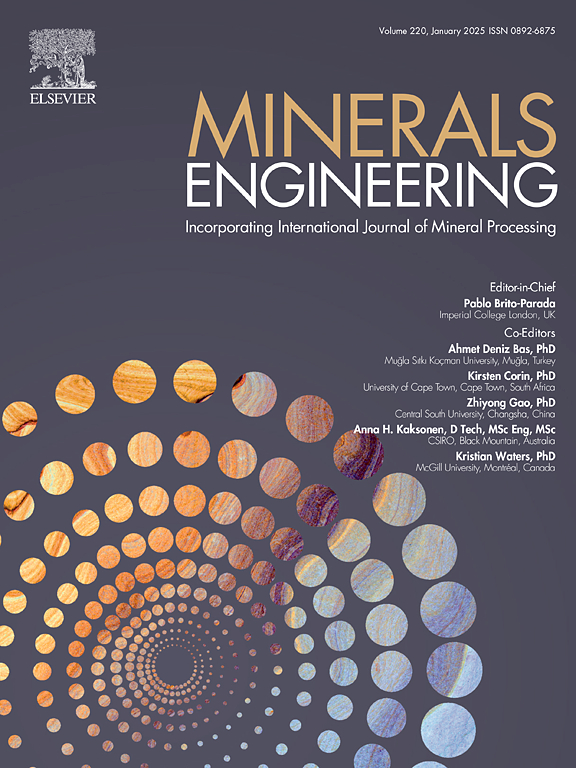The influence of Ca2+/Mg2+ concentration on the rheological properties of kaolinite slurry: An experiment and DLVO calculation study
IF 4.9
2区 工程技术
Q1 ENGINEERING, CHEMICAL
引用次数: 0
Abstract
This study researched into the underlying influence mechanism of Ca2+ and Mg2+ on the rheological properties of kaolinite slurry through rheological technique, turbidity analysis and DLVO theory calculation. The rheological results showed that both the viscosity and yield stress of kaolinite slurry were reduced under high Ca2+/Mg2+ concentration. The apparent viscosity of slurry containing Mg2+ was lower than that of slurry containing Ca2+, but the yield stress of slurry containing Mg2+ was higher than that of slurry containing Ca2+. Turbidity results showed that Ca2+ have a stronger turbidity removal effect on kaolinite suspension than Mg2+. The agglomeration of kaolinite in the presence of Ca2+ was greater than that in the presence of Mg2+. The DLVO theoretical calculation results indicated that there was strong attractive energy between silica face-alumina face, silica face-edge face and edge face-edge face under 1 mmol/L Ca2+/Mg2+. There were repulsive energy barriers between the silica face-silica face, as well as between the alumina face-alumina face and alumina face-edge face. However, there was an attractive energy between the alumina face-edge face under 1 mmol/L Mg2+. The kaolinite agglomeration was a basal face-basal face (F-F) structure with tight and large under 1 mmol/L Ca2+, but the kaolinite agglomeration was F-F and edge face-basal face (E-F) structure with loose and large under 1 mmol/L Mg2+. The E-F structure in the presence of Mg2+ caused high yield stress of kaolinite slurry. Under high ions concentration, there was a weak attraction or repulsion between basal faces of kaolinite, but there was an attractive effect between the edge faces. The kaolinite agglomerates were edge face-edge face (E-E) structure with small and even dispersed, resulting in a low viscosity of the slurry. The conclusion of this study provides a basis for regulating the rheological properties of rich-clay slurry during mineral processing.
求助全文
约1分钟内获得全文
求助全文
来源期刊

Minerals Engineering
工程技术-工程:化工
CiteScore
8.70
自引率
18.80%
发文量
519
审稿时长
81 days
期刊介绍:
The purpose of the journal is to provide for the rapid publication of topical papers featuring the latest developments in the allied fields of mineral processing and extractive metallurgy. Its wide ranging coverage of research and practical (operating) topics includes physical separation methods, such as comminution, flotation concentration and dewatering, chemical methods such as bio-, hydro-, and electro-metallurgy, analytical techniques, process control, simulation and instrumentation, and mineralogical aspects of processing. Environmental issues, particularly those pertaining to sustainable development, will also be strongly covered.
 求助内容:
求助内容: 应助结果提醒方式:
应助结果提醒方式:


